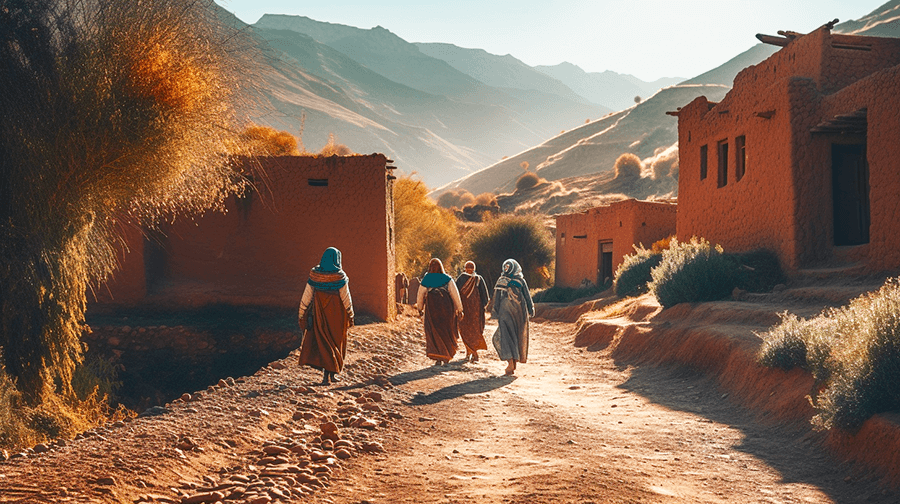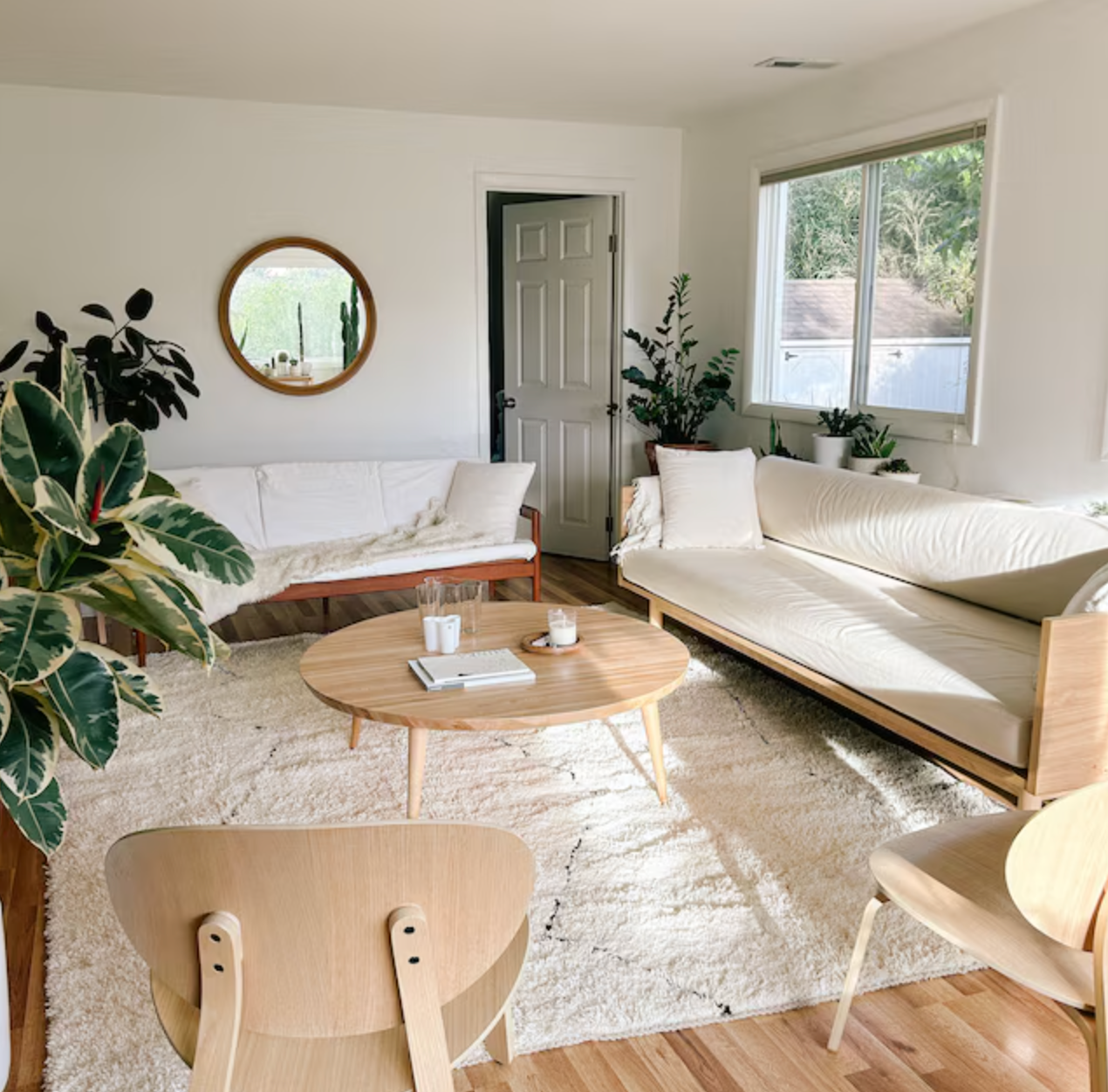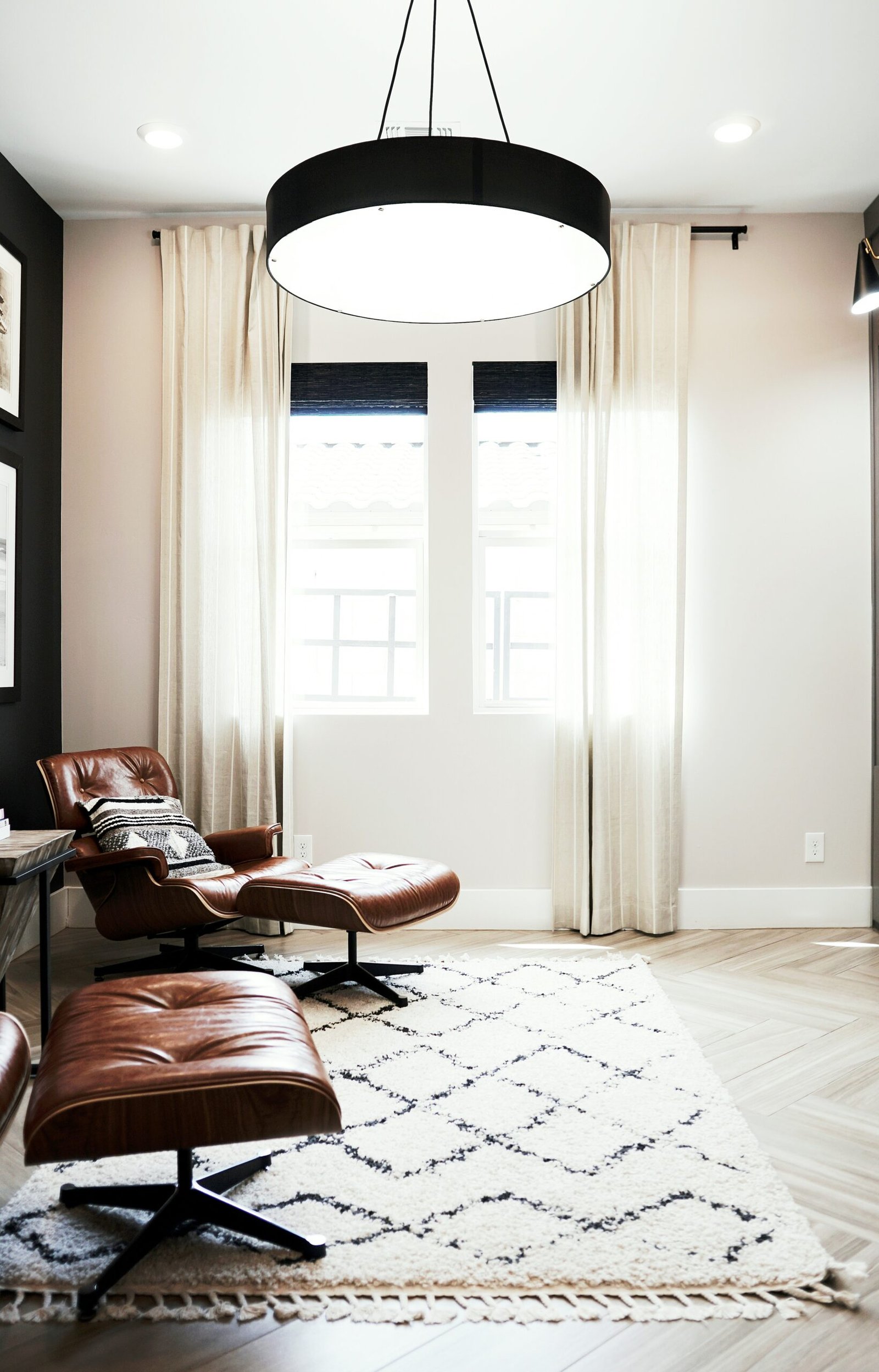Your cart is currently empty!
Crafting a Moroccan Rug: The Art and Tradition of Berber Tribes

Introduction to Moroccan Rugs
Moroccan rugs are a significant cultural artifact, deeply embedded in the rich traditions of Moroccan heritage. These rugs are not merely decorative items but are considered a testament to the artistry and craftsmanship of the Berber tribes, who have been creating these remarkable pieces for centuries. Their intricate designs and vivid colors reflect the diverse influences and historical exchanges that have shaped Moroccan culture over time.
Historically, Moroccan rugs date back to the Paleolithic era, with Berber tribes using them as functional items for their nomadic lifestyle. These rugs provided insulation against the cold and served as bedding, blankets, and even saddle covers. Over the centuries, the designs have evolved, incorporating symbols and motifs that convey stories, beliefs, and the weavers’ personal experiences.
What sets Moroccan rugs apart from other types is their unique characteristics. Each rug is handwoven, ensuring that no two pieces are identical. The use of natural dyes derived from plants, minerals, and even insects gives these rugs their distinctive and vibrant colors. The materials used, typically wool or cotton, contribute to their durability and comfort. Moreover, the patterns often hold symbolic meanings, such as protection, fertility, and spirituality, thus adding a layer of depth and significance to each rug.
The role of the Berber tribes in the creation of Moroccan rugs cannot be overstated. These indigenous groups, primarily spread across the Atlas Mountains, have preserved and passed down the traditional weaving techniques through generations. Their expertise and intimate knowledge of the craft ensure that each rug is a masterpiece of cultural heritage and artistic expression.
In understanding Moroccan rugs, one appreciates not only their aesthetic appeal but also the cultural richness and historical continuity they represent. These rugs are a living testament to the enduring artistry of the Berber tribes and their indelible mark on Moroccan cultural identity.
The Berber Tribes and Their Cultural Heritage
The Berber tribes, indigenous to North Africa, particularly in Morocco, have a rich cultural heritage deeply rooted in their nomadic lifestyle and traditions. These tribes, also known as Amazigh, have traversed the rugged landscapes of the Atlas Mountains and the Sahara Desert for centuries, carrying with them a wealth of knowledge and customs that have been passed down through generations. Central to their way of life is the art of rug-making, a craft that is not only a practical necessity but also a profound expression of their cultural identity.
Rug-making among the Berber tribes is often a communal activity, with women usually taking the lead in weaving intricate patterns and designs. These rugs serve various practical purposes, such as providing warmth and comfort in their tents, but they also hold significant cultural and symbolic meanings. The patterns and colors used in Berber rugs are not arbitrary; each motif and hue carries specific connotations and tells a story. For instance, diamonds often symbolize protection, while zigzag lines can represent water or serpents. The use of vibrant colors like red, blue, and saffron yellow can denote different aspects of life, such as fertility, prosperity, and spirituality.
The nomadic lifestyle of the Berber tribes has greatly influenced their artistic expressions. As they move from place to place, they gather inspiration from the diverse landscapes and experiences, which are then reflected in their rugs. The materials used in the creation of these rugs are also sourced from their surroundings, including wool from their sheep and natural dyes derived from plants and minerals. This connection to the land is evident in the earthy tones and organic patterns that are characteristic of Berber rugs.
In essence, the art of rug-making among the Berber tribes is a tapestry of their cultural heritage, encapsulating their history, beliefs, and connection to the natural world. Each rug is a unique piece of art, a tangible representation of the Berber way of life, and a testament to their enduring traditions.
Materials and Tools Used in Moroccan Rug Making
The creation of a Moroccan rug is deeply intertwined with the natural environment of the Berber tribes. The primary material used in these traditional rugs is wool, sourced from local sheep that graze on the highlands of the Atlas Mountains. This high-quality wool, known for its durability and warmth, forms the cornerstone of Berber rug-making. The wool is meticulously cleaned, carded, and spun into yarn, often by the skilled hands of the women in the community.
Natural dyes play a crucial role in the vibrant colors that define Moroccan rugs. These dyes are derived from a variety of plants, minerals, and other organic materials. For instance, the rich reds are typically obtained from madder root, while saffron and henna provide shades of yellow and orange. Indigo plants are used to create deep blues, and walnut shells offer a range of brown tones. These natural dyes not only ensure the rugs are environmentally friendly but also contribute to their unique and enduring beauty.
In addition to wool and dyes, the tools employed in Moroccan rug-making are essential to the craft. The loom is the most significant tool, and it can vary in size and complexity depending on the type of rug being made. Vertical looms, often used for larger rugs, are common in Berber communities. Weaving combs, used to pack down the weft threads tightly, and spindles for spinning the wool are other vital tools in this intricate process. Each tool has been passed down through generations, carrying with it the historical and cultural significance of the Berber tribes.
The combination of these natural materials and traditional tools results in the creation of Moroccan rugs that are not only functional but also pieces of art. They embody the skills and traditions of the Berber tribes, transforming simple wool and natural dyes into intricate patterns and designs that tell stories of their heritage and way of life.
The Weaving Process: From Wool to Rug
The creation of a traditional Moroccan rug begins with the careful selection and preparation of raw materials. The journey starts with shearing the sheep, a process that is typically conducted in the spring. The wool gathered from this shearing is then washed to remove impurities such as dirt and lanolin. This washing is crucial for ensuring the wool’s softness and workability.
Once cleaned, the wool undergoes carding, a technique used to disentangle and align the fibers. Carding not only prepares the wool for spinning but also contributes to the evenness and consistency of the final yarn. The next step is spinning, where the carded wool is twisted into yarn using a spindle or spinning wheel. This process transforms the loose fibers into a continuous thread, ready for dyeing.
Dyeing the yarn is a significant part of the rug-making process, often carried out using natural dyes derived from plants, minerals, and even insects. Traditional Berber weavers utilize a palette of vibrant hues, each color holding symbolic meanings and significance. The dyed yarns are left to dry in the sun, allowing the colors to set and intensify.
The actual weaving process is where the artistry of the Berber tribes truly shines. Using a loom, weavers interlace yarns to create intricate patterns and motifs. The techniques employed can vary, but one common method is the “hand-knotting” technique, where individual knots are tied to form the rug’s pile. These knots are then secured by weft threads, which run horizontally across the loom.
Patterns in Moroccan rugs are often geometric and symmetrical, reflecting the cultural heritage and storytelling traditions of the Berber tribes. Each rug is unique, with designs that can range from simple, minimalist motifs to complex, elaborate compositions. The entire process, from shearing to the final weave, is a meticulous craft passed down through generations, epitomizing the rich cultural legacy of Moroccan rug-making.
Traditional Patterns and Their Meanings
The intricate patterns found in Moroccan Berber rugs are more than just visually captivating designs; they are a reflection of the rich cultural heritage and spiritual beliefs of the Berber tribes. Each pattern and motif carries symbolic meanings that are deeply rooted in the daily life, nature, and spiritual world of the Berber people.
One of the most common motifs is the diamond shape, which often symbolizes protection, especially for women and children. This shape is frequently repeated across the rug, representing a shield against evil spirits. Another significant pattern is the zigzag or “running water” motif, which symbolizes the flow of life and the continuity of existence. This motif is believed to bring prosperity and safeguard against drought.
Animal and plant motifs are also prevalent in Berber rugs. For instance, the camel, an essential part of Berber life, is often depicted as a symbol of endurance and resilience. The tree of life, frequently woven into the rugs, represents growth, fertility, and the connection between heaven and earth. Additionally, stars and celestial symbols are commonly used to invoke protection and guidance from the spiritual realm.
Geometric shapes such as squares and triangles also play a crucial role in the design of Moroccan Berber rugs. Triangles can represent the elements of fire, water, and earth, or they may symbolize family lineage and heritage. Squares often denote the concept of stability and balance, echoing the importance of harmony in Berber philosophy.
The use of color in these rugs is equally meaningful. Red often signifies strength and protection, while blue represents wisdom and tranquility. Green is a symbol of fertility, and yellow evokes the warmth of the sun and the promise of growth. The combination of these colors creates a vibrant tapestry that tells a story unique to the weaver’s personal experiences and beliefs.
Understanding these traditional patterns and their meanings provides a deeper appreciation for the artistry and cultural significance of Moroccan Berber rugs. Each rug is not merely a decorative item but a woven narrative that connects the past with the present, offering a glimpse into the enduring traditions of the Berber tribes.
The Role of Women in Rug Making
In the Berber tribes, the art of crafting Moroccan rugs is a tradition deeply intertwined with the daily lives and roles of women. This intricate craft is not merely an economic activity but a vital cultural practice passed down through generations. Women are the primary custodians of this heritage, and their role in rug making is both central and multifaceted.
Rug making is often a communal activity, where women gather to weave, share stories, and strengthen social bonds. The process serves as a conduit for cultural transmission, where knowledge about techniques, patterns, and symbolic meanings is shared among different generations. Young girls learn the craft by observing and participating alongside their elders, ensuring that the skills and traditions are preserved.
The expertise women bring to this craft is remarkable. Each Moroccan rug is a testament to their meticulous skill and artistic vision. From selecting the wool to dyeing the yarn with natural colors and executing intricate designs, every step demands precision and creativity. The patterns often carry symbolic meanings, reflecting the weaver’s personal experiences, beliefs, and the collective identity of the tribe.
Moreover, the communal aspect of rug making fosters a support system among women. It provides a platform for them to express themselves creatively and contribute to their households’ economic well-being. Through their craftsmanship, women not only sustain an age-old tradition but also play an essential role in the social and economic fabric of their communities.
Thus, the role of women in Moroccan rug making is indispensable. Their dedication, skill, and creativity ensure that this rich cultural heritage continues to thrive, connecting the past with the present and preserving it for future generations.
Modern Influences and Global Popularity
In recent years, Moroccan rugs have transcended their traditional roots to become a celebrated global phenomenon. The intricate designs and skilled craftsmanship of Berber tribes have captivated interior designers and homeowners alike, leading to a surge in demand for these unique pieces. This global popularity can be attributed to the fusion of traditional Berber techniques with contemporary design aesthetics. Modern interpretations often integrate minimalist patterns and color palettes while maintaining the essence of Berber artistry, creating a harmonious blend that appeals to a broad audience.
As a result of this heightened interest, Berber communities have experienced both positive and negative impacts. On the one hand, the increased demand has provided economic benefits and allowed artisans to sustain their livelihoods through their craft. Many cooperatives have emerged, empowering women and ensuring fair wages and working conditions. These initiatives have helped preserve traditional weaving techniques, passing them down to younger generations and keeping the cultural heritage alive.
However, the popularity of Moroccan rugs has also led to some challenges. The high demand has sometimes resulted in mass production, which can compromise the quality and authenticity of the rugs. Additionally, the influx of cheaper imitations has posed a threat to the market for genuine handwoven rugs. This underscores the importance of educating consumers about the value of authentic Moroccan rugs and the cultural significance they embody.
Despite these challenges, the global appreciation for Moroccan rugs reflects a growing recognition of the artistry and cultural richness of Berber traditions. By supporting authentic Moroccan rugs, consumers can contribute to the preservation of this ancient craft, ensuring that the legacy of Berber artisans continues to thrive in the modern world.
Preserving the Craft: Challenges and Future Outlook
The art of crafting Moroccan rugs, particularly by the Berber tribes, faces significant challenges in the modern era. Economic pressures are a predominant concern. With the cost of raw materials rising and the labor-intensive nature of handwoven rugs, many artisans find it increasingly difficult to sustain their livelihood solely through traditional rug-making. This economic strain is exacerbated by the influx of cheaper, machine-made rugs flooding the market, which often undercuts the prices of authentic, handcrafted pieces.
Globalization has further complicated the landscape for Berber weavers. While it has opened up international markets and increased awareness of Moroccan rugs, it has also led to cultural homogenization. The unique designs and techniques that define Berber rugs are at risk of being diluted as mass-produced imitations proliferate. This trend not only threatens the economic viability of traditional weavers but also endangers the cultural heritage that these artisans embody.
Despite these challenges, several initiatives aim to preserve and promote the traditional craft of Berber rug-making. Non-governmental organizations and cultural preservation groups are working to provide financial support and training to artisans, helping them to enhance their skills and adapt to changing market conditions. Fair trade practices are also being promoted to ensure that weavers receive equitable compensation for their work, thereby making the craft more sustainable.
Moreover, there is a growing movement among consumers who value authentic, handmade products and are willing to invest in ethically produced goods. This shift in consumer behavior is encouraging for Berber weavers, as it helps create a demand for their unique, handcrafted rugs. Educational campaigns and collaborations with designers and artists are also playing a crucial role in preserving the distinctive techniques and patterns that define Berber rugs.
In essence, while the challenges are formidable, the concerted efforts of various stakeholders offer a glimmer of hope for the future of Berber rug-making. By addressing economic, cultural, and market-related issues, the tradition of crafting Moroccan rugs can continue to thrive, preserving a cultural legacy that has been passed down through generations.
Latest Posts
-

The Timeless Beauty of Handmade Moroccan Rugs: Exploring Wool Berber and Moroccan Area Rugs
Introduction to Handmade Moroccan Rugs Handmade Moroccan rugs are not merely floor coverings; they are…
-

The Timeless Elegance of Beni Ourain Rugs: Hand-Knotted Masterpieces from Natural Wool
Introduction to Beni Ourain Rugs Originating from the Berber tribes in the Atlas Mountains of…
-

Incorporating Moroccan Area Rugs: Transform Your Home Décor
Introduction to Moroccan Area Rugs Moroccan area rugs hold a rich history and cultural significance…
Leave a Reply